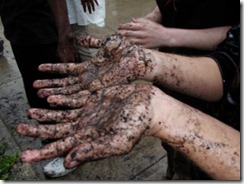Fiction-Zone: Leaps in Fiction Mastery by Diane Holmes


I was recently talking with Hollywood Story Consultant Christopher Vogler, for an article over at Pitch University:
Now, if the name is familiar, there’s a reason for this. He’s kind of a legend for his ground-breaking work bringing the power of myth to screen and novel writers with The Writer’s Journey, now in it’s 3rd edition.
As a Hollywood Story Consultant for Disney, Fox2000, and Paramount, he’s worked on some of the biggest movies of our time. The Lion King, Courage Under Fire, I Am Legend. You may have heard of them.
When the subject of pacing came up, he told me the following story.
Christopher Vogler: I work mostly with screenwriters and had to deal with a pacing issue on rewrites of THE FIGHTER, on which I worked with one of the screenwriters, Scott Silver (8 Mile).
The script was EXTREMELY dynamic, with high highs and low lows on almost every page.
The overall effect was “aesthetic exhaustion.” An audience would just get worn out from trying to ride that roller coaster.
I worked with Scott to find major turning points, so that the script would build up to a high point for three or four pages before taking a darker turn for a few minutes.
It gave the audience a chance to enjoy and share in the hero’s triumphs before the next twist in the road.
I love this advice for two very important reasons.
#1 Characters do not need rest.
There is a strange piece of advice that writers repeat to each other that goes, “You can’t have fast pace all the time; you have to let characters rest and build in slow-paced scenes.”
I know this, because Inevitably, if I give gentle critique feedback that a scenes is dragging a bit (because the characters are sitting around making idle chitchat, with no goal), the scene is defended strongly using this logic.
But listen to what Chris says. It’s not that scenes should be slow/boring or be designed to give your character a Snickers break.
No.
Your scenes should build to the big turning points. The high highs and low lows are end destinations. You don’t just leap from devastating low to another low low, to an incredible high, and back again.
And you certainly don’t take a break off from the story.
You build scene upon scene in a way that propels your story forward.
Awesome.
#2 Pacing is created within a scene and across scenes.
We writers often focus on scene creation and scene rewrites, but audiences and readers experience the dynamic of a story unfolding and building into larger turning points. And these turning points build into a larger experience called Your Book (or Movie).
Readers don’t care about the scene unit nearly as much as we do. They care about what just happened to the characters, what’s happening now, and what might happened in the story future.
Because the story is going somewhere.
Because there’s a meaning to be made out of what happens.
Because you’re telling them as the writer that what they read (or see) is important and matters when it all comes together.
Because of a hundred different reasons.
So when we think of pacing, let’s try to think of story pacing and not just scene pacing, okay?
Good.
And if you’re interested in learning more from Christopher Vogler, check out his new book. Or join me at the November 2011 Story Master Conference. I’d love to meet the Freelance-Zone Peeps!

This article is the 6th in Diane’s craft-of-fiction-writing series on Pacing:
- How to Be a Pacing Genius
- Pacing and the Thirst for Something Fresh (Blood Optional)
- You Can’t Look Away: Pacing & The Riveting Story
- Shot Through the Heart: Threat, Consequences, and Emotions Equal Pacing
- BONUS: Don’t Hold Back – Pacing Advice by Literary Agent Donald Maass
- BONUS with Hollywood Story Consultant Christopher Vogler
- The “Oh, Crap!” Factor: Pacing in Real Time
- Bam! Pow! Wham! Good Pacing Causes Immediate Reaction
- Situation Critical: Pacing’s Need for an Unknown Outcome
- Game Changers: Pacing, Plot Twits, and Reader Engagement
- Pacing that Matters: It All Comes Down to Characters
- Your True Opponent: Pacing’s Race to Outwit the Reader
- 9 Pacing Techniques, 1 Scene on Fire
—
 Diane writes two alternating columns for Freelance-Zone:Fiction-Zone: Leaps in Fiction Mastery and Marketing-Zone:Marketing-Zone: Marketing Yourself and Your Book.
Diane writes two alternating columns for Freelance-Zone:Fiction-Zone: Leaps in Fiction Mastery and Marketing-Zone:Marketing-Zone: Marketing Yourself and Your Book.
She’s the Founder and Chief Alchemist of Pitch University – “Learn to pitch your book from the AGENTS and EDITORS who make their living at it. Learn. Pitch. Sell.”


 But specifically it means at least one character now, right-this-very-minute, knows it. There was now, when the character did not know something was bad, and now there is after, the new now.
But specifically it means at least one character now, right-this-very-minute, knows it. There was now, when the character did not know something was bad, and now there is after, the new now.





